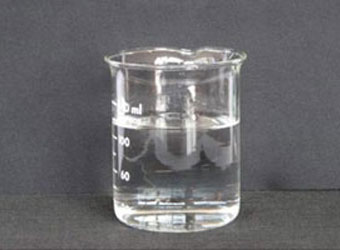Introduction of polytetramethylene ether glycol (PTMEG)
Polytetramethylene ether glycol (PTMEG) is homopolymer obtained by cationic ring opening polymerization of monomer tetrahydrofuran (THF) in the presence of catalyst. PTMEG is a linear polyether glycol of a type of primary hydroxyl group. At room temperature, it is a white wax solid. When the temperature exceeds room temperature, it is melted into a transparent and colorless liquid. Easily soluble in alcohol, ester, ketone, aromatic and chlorinated hydrocarbon, insoluble fatty hydrocarbon and water.

Polytetramethylene ether glycol, also known as polytetrahydrofuran, is briefly called PTMEG. The molecular formula of polytetramethylene ether glycol is HO-(- CH2CH2CH2CH2O-)n-H, CAS No. is 24979-97-3.
Relative molecular weight of polytetramethylene ether glycol (PTMEG) products can be divided into 250, 650, 1000, 1400, 1800, 2000, 3000 and so on. Industrial production can adjust its relative molecular weight according to market demand, so as to produce products of different specifications.
Main uses of polytetramethylene ether glycol
Polytetramethylene ether glycol (PTMEG) is mainly used to produce polyurethane elastomers, polyurethane elastic fibers (Spandex) and ester ether copolymer elastomers. The largest consumer market of PTMEG is spandex, accounting for about 49%, followed by polyurethane elastomers, about 35%, and ester ether copolymer elastomers account for about 15%. PTMEG is a very important polyether polyol raw material in the production of polyurethane elastomer products. In China, PTMEG is mainly used for spandex and polyurethane elastomers. It is basically blank for ester ether copolymer elastomers.
The raw material for the production of polytetramethylene ether glycol (PTMEG) is tetrahydrofuran, the tetrahydrofuran monomer is polymerized by ring opening to form the main chain composed of carbon chain and ether chain. It is glycols and linear structure. The hydroxyl group is located at both ends of the main chain. The main chain of PTMEG is made up of carbon chain and ether chain. Because it does not contain unsaturated bonds and has good flexibility, so it has better aging resistance and the best mechanical properties. It also has good hydrolysis resistance because of no ester bond.
Physicochemical properties of polytetramethylene ether glycol (PTMEG)
Colorless and flammable. Industrial packaging, dry nitrogen sealed tank. Store in storage tank with insulation and heating coil, away from fire and heat source. Storage and transportation of inflammable and toxic substances using tank cars with heating pipes.
Market situation of polytetramethylene ether glycol
Polytetramethylene ether glycol (PTMEG) is the raw material for the production of spandex and polyurethane elastomers. With the development of global polyurethane and polyurethane elastomers, the market demand for polytetramethylene ether glycol (PTMEG) is also increasing. The United States consumed PTMGE in 2002 and 2003, respectively, at 83 thousand tons and 88 thousand tons. In 2005, it reached 98 thousand tons, that is, the annual growth rate from 2002 to 2005 was 6.6%. In Western Europe, the market supply in 2003 was 67 thousand tons, with a total value of about 235 million dollars. 60% was used for spandex and 19% for polyurethane elastomers. In 2003, the market demand for polytetramethylene ether glycol (PTMEG) in Japan was 27 thousand tons, of which 2/3 were used for the production of ammonia ester, 17% for polyurethane elastomer, 8% for polyether elastomer, and the rest for polyurethane coatings, polyurethane adhesives and others.
Polytetramethylene ether glycol (PTMEG) for sale
Unlike most chemical products, the products of all polytetramethylene ether glycol (PTMEG) manufacturers have their own characteristics. The downstream customers need to communicate with suppliers effectively when buying, and purchase the chemicals that they need. If you have chemicals that you want to purchase, contact us quickly.
